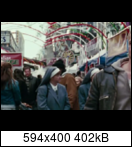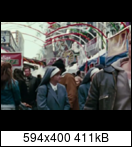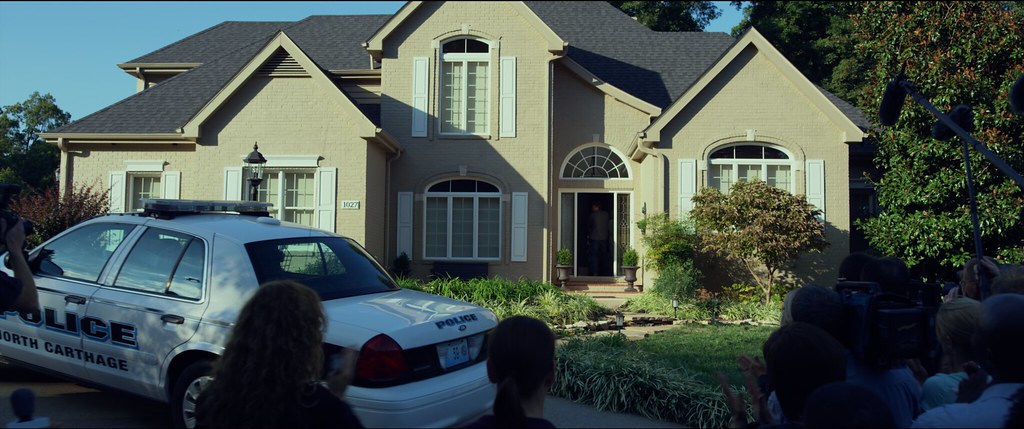Welcome to Doom9's Forum, THE in-place to be for everyone interested in DVD conversion. Before you start posting please read the forum rules. By posting to this forum you agree to abide by the rules. |
|
|
#31662 | Link |
|
Registered User
Join Date: Jan 2008
Posts: 589
|
Hey, quick question. I am planning on building a rig based around a UHD screen and a 980Ti (not just for movies). Of course, since there is little UHD content in the wild I intend on primarily watching upscaled 1080p movies. Up until now I didn't care about upscaling too much with my current config, but of course in this project upscaling quality will be paramount, since my viewing angle will be optimized for UHD (i.e. the picture will be much bigger), not 1080p. Is NNEDI3 1080p -> 2160p feasible with a high-firepower GPU such as the 980Ti or is it too extreme still? Is NNEDI3 good enough to provide high quality presentation of 1080p upscaled to 4 times the typical effective picture size?
|
|
|

|
|
|
#31663 | Link | |
|
Registered User
Join Date: Jun 2005
Posts: 504
|
Quote:
Edit: Right now, my optimal settings for 1024x576 -> 1920x1080 of SuperRes is 2-passes with strength 0.40, algo 1. Last edited by Anima123; 11th July 2015 at 21:04. |
|
|
|

|
|
|
#31664 | Link | ||
|
Registered User
Join Date: Sep 2012
Posts: 77
|
Quote:
Quote:
I always disliked sharpening in general, but this new SuperRes does wonders combined with S-XBR 
|
||
|
|

|
|
|
#31665 | Link | |
|
Registered User
Join Date: Dec 2010
Posts: 255
|
Quote:
Last edited by AngelGraves13; 11th July 2015 at 22:07. |
|
|
|

|
|
|
#31666 | Link | |
|
Registered Developer
Join Date: Sep 2006
Posts: 9,140
|
Quote:
This is extremely important, because different strength values don't cost performance. But 2 passes is exactly twice as slow as 1 pass. |
|
|
|

|
|
|
#31668 | Link |
|
Registered User
Join Date: Jun 2005
Posts: 504
|
I just tried between 2 passes, strength 1.0 vs. 4 passes, strength 0.50 with madVR latest test build, result as follow:
https://www.dropbox.com/s/heo0bzw64t...h1.00.png?dl=0 https://www.dropbox.com/s/x94w0few0d...h0.50.png?dl=0 For a moment I almost doubt that I am looking at the same picture. I would say, that madshi has changed the SuperRes's behavior quite a lot from the original. The original idea is that the images should converge as passes increasing. Do you have any comment on that madshi? |
|
|

|
|
|
#31669 | Link |
|
Registered User
Join Date: Dec 2011
Posts: 1,812
|
Neat, new SuperRes has an AA effect, even though the image gets sharper (e.g. with that "high" preset).
But very interesting: The effect of SuperRes is totally different between super-xbr and NNEDI3: It seems to be much stronger with the latter one. Is this by design? I still think I don't need SuperRes anymore now that AS can be used with NNEDI3. At least I don't have performance for both, and I really rather enjoy NNEDI3 (you probably guessed it  ) )super-xbr 75 quadrupling + "high" SuperRes:  NNEDI3 64 + super-xbr 75 quadrupling + AS UR 0.2: 
|
|
|

|
|
|
#31670 | Link | |
|
Registered User
Join Date: Jun 2011
Posts: 121
|
Quote:

|
|
|
|

|
|
|
#31671 | Link |
|
Registered User
Join Date: Dec 2011
Posts: 1,812
|
I even can't distinguish between 1080p -> WQHD NNEDI3 64 and 1080p -> WQHD Jinc3 AR (at least with the samples I watched). I think the default settings to only double resolution with scaling factors >= 1,5x totally make sense.
Last edited by aufkrawall; 11th July 2015 at 23:24. |
|
|

|
|
|
#31672 | Link | |||||||||||||||||||||||
|
Registered Developer
Join Date: Sep 2006
Posts: 9,140
|
Please use one of the many madVR guides/tutorials out there. Your question is too general to give a good answer to, and this kind of question gets asked all the time.
Quote:
No, you don't have to. All I was trying to say is that judging image quality can be a difficult task. And I was trying to prove it by showing that you yourself are changing your opinion once in a while. Anyway... Quote:
HQ off produces a different look, one that I personally find very artificial looking. Quote:
Quote:
The slow AR algo in this image believes that allowing ringing is the way to go. Which seems to not be a good decision in this case. But in many other cases the fast AR looks worse than the slow AR. You have the choice now. For luma/image doubling I believe the slow AR is a clear winner. Tested on several images and slow AR always looked better. Quote:
Quote:
Quote:
Quote:
Quote:
If there are compression artifacts, that should be handled by a different filter. Which sadly doesn't exist yet. Quote:
Quote:
Quote:
Quote:
But all of this is still up for discussion. We're not there yet, though. I want to first reduce all the sharpening options as much as possible. Only afterwards we'll go back to see when to use image enhancements vs upscaling refinement, in combination or not etc... Quote:
Quote:
Quote:
Quote:
Quote:
Quote:
Quote:
But yes, NNEDI3 is a good choice if you want max quality and it's the best you can use for that job. I'd add one pass of SuperRes or FineSharp on top of that, to improve perceived sharpness even more. You may also want to use debanding because many Blu-Rays still have banding in them. If you want to save GPU power, super-xbr would be a *MUCH* faster alternative. Quality is a bit lower than NNEDI3, but still quite good. Quote:
Quote:
Quote:
|
|||||||||||||||||||||||
|
|

|
|
|
#31673 | Link | ||
|
Troubleshooter
Join Date: Feb 2014
Posts: 339
|
Quote:
Quote:
Edit: I like the way it combines with image enhancements (not the upscaling refinement version) of Adaptive Sharpening (not sure on the strength...0.3 or 0.5 maybe), but I'll hold back on further commenting on that until you want to talk about combining effects.
__________________
System specs: Sager NP9150 SE with i7-3630QM 2.40GHz, 16 GB RAM, 64-bit Windows 10 Pro, NVidia GTX 680M/Intel 4000 HD optimus dual GPU system. Video viewed on LG notebook screen and LG 3D passive TV. Last edited by Anime Viewer; 12th July 2015 at 01:01. Reason: added comment about combining with AS |
||
|
|

|
|
|
#31674 | Link | |
|
Registered User
Join Date: Oct 2012
Posts: 26
|
Quote:
Well, SuperRes is, again, quite better than the previous build. But it creates a huge amount of aliasing. Here is a sample. that's the Gone Girl Blu-ray (which is what we can call a very high quality content) upscaled to 3440x1440 résolution in 2.39 ratio. Chroma is NNEDI3 64, image Doubling is NNEDI3 64, downscaling is CR AR LL. Look at the police car, the framing of the rear door. No SuperRes, No Adaptative Sharpen  SuperRes high, No Adaptative Sharpen  SuperRes ultra, No Adaptative Sharpen  SuperRes ultra, Adaptative Sharpen 0.3  No SuperRes , Adaptative Sharpen 1.5 (ridiculous setting, just for science, though) 
Last edited by Eyldebrandt; 12th July 2015 at 00:15. |
|
|
|

|
|
|
#31675 | Link |
|
Registered User
Join Date: May 2012
Posts: 447
|
Like this?
 (top is processed, bottom is original) Of course there are some problem areas, and there are way more examples where this neural network generates extremely weird things, but I thought its performance on this particular image was pretty incredible. (top is processed, bottom is original) Of course there are some problem areas, and there are way more examples where this neural network generates extremely weird things, but I thought its performance on this particular image was pretty incredible.
__________________
Test patterns: Grayscale yuv444p16le perceptually spaced gradient v2.1 (8-bit version), Multicolor yuv444p16le perceptually spaced gradient v2.1 (8-bit version) Last edited by Ver Greeneyes; 12th July 2015 at 00:17. |
|
|

|
|
|
#31676 | Link |
|
Troubleshooter
Join Date: Feb 2014
Posts: 339
|
Quote:
Perhaps a settings that uses certain features (like SuperRes) on low resolution content, and others active on higher resolution content (like AS) would be a good idea. I know we can do this with rules pretty easy right now, but in the interest of simplifying things it might be something to look into down the road.
__________________
System specs: Sager NP9150 SE with i7-3630QM 2.40GHz, 16 GB RAM, 64-bit Windows 10 Pro, NVidia GTX 680M/Intel 4000 HD optimus dual GPU system. Video viewed on LG notebook screen and LG 3D passive TV. |
|
|

|
|
|
#31677 | Link |
|
Registered User
Join Date: Oct 2012
Posts: 26
|
The rear window of the car.
The sample with AS @ 1.5 is ugly as hell. Wax on trees, loss details on fines structures, luma pixels oversharpened. But, less aliasing than ultra SuperRes. The best combo is not on those samples, uit's NNEDI3 + low set for AS. It's obvious to say a feature can be good for one content and not for an other. But, the point is, if SuperRes might be destructive on these type of content, what is he doing on poor quality content ? To my opinion, i have more to gives to Mathias with this kind of sample, rarer than 480p to 1080p content. I can post hundred of samples, but, hey, obviously, 480p to WQHD or 4K will look shit w/e you've used. So i'll focus on those who can show important details. i.e, i have a sample who shows the destructive action of SuperRes to pixels when bitrate is high and amount of details is huge. Step by step. Last edited by Eyldebrandt; 12th July 2015 at 00:10. |
|
|

|
|
|
#31678 | Link | |
|
Troubleshooter
Join Date: Feb 2014
Posts: 339
|
Quote:
Given its Google their source probably wouldn't be to accessible for integration into software like madVR and MPDN (from a rights perspective).
__________________
System specs: Sager NP9150 SE with i7-3630QM 2.40GHz, 16 GB RAM, 64-bit Windows 10 Pro, NVidia GTX 680M/Intel 4000 HD optimus dual GPU system. Video viewed on LG notebook screen and LG 3D passive TV. |
|
|
|

|
|
|
#31680 | Link | ||
|
Registered User
Join Date: May 2012
Posts: 447
|
Quote:
Quote:
 It really does a number on images that aren't composed of animal heads - it's not suitable at all as a general algorithm unless you want to make your videos look extremely psychedelic. It really does a number on images that aren't composed of animal heads - it's not suitable at all as a general algorithm unless you want to make your videos look extremely psychedelic.* although it does add an extra head onto the body of the big dog in the bottom left
__________________
Test patterns: Grayscale yuv444p16le perceptually spaced gradient v2.1 (8-bit version), Multicolor yuv444p16le perceptually spaced gradient v2.1 (8-bit version) Last edited by Ver Greeneyes; 12th July 2015 at 00:23. |
||
|
|

|
 |
| Tags |
| direct compute, dithering, error diffusion, madvr, ngu, nnedi3, quality, renderer, scaling, uhd upscaling, upsampling |
|
|